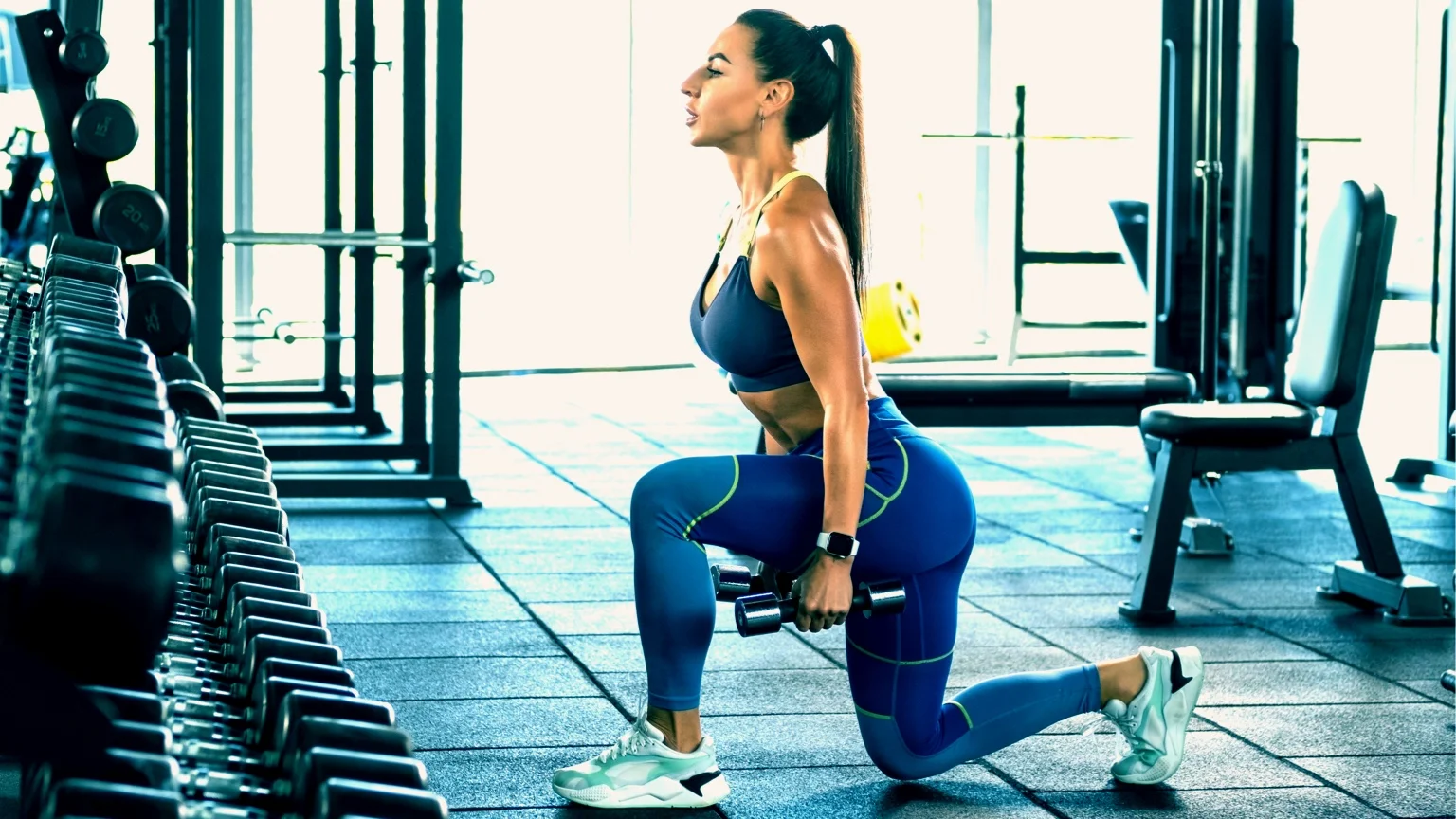
New
Build a workout routine for your personal fitness level and goals
Create a personalized workout plan using Gym Geek’s new AI tool. Gym Geek AI can generate a single workout or a structured routine for any fitness goal.
Powered by
Need a quick 30 minute leg workout? Don’t have access to gym equipment? Then this dumbbell leg workout is for you. With 4 exercises, this workout targets all the major muscle groups in your lower body.
Designed with squats, deadlifts, lunges and calf raises, the aim is to work and challenge your lower body from different angles and intensities.
This workout is great for beginners and fits perfectly into a push pull legs (PPL) routine.
Are dumbbells enough to train legs?
Look at many leg day routines and you’ll often find the need to use gym equipment. Leg press, leg curls and hack squats are all exercises that need machines. You’ll also often see barbell squats rather than dumbbell squats in the routine.
But it is possible to have a comprehensive leg workout using just dumbbells.
Hitting your posterior and ANTERIOR chain!
There are two main lower body movements:
- Posterior chain – These are the muscles on the front of your body, i.e. glutes, hamstrings and calves. You can work your posterior chain with deadlifts.
- Anterior chain – These are the muscles on the front of your body. In terms of lower body, it’s the quads we want to work. Your quads are worked by squats and lunges.
So long as you build a leg day routine incorporating deadlifts, squats and lunges, this will sufficient to fully work your lower body.
Benefits of dumbbells
There’s a few obvious benefits to creating a leg workout using just dumbbells:
- Convenience and accessibility – Many people have dumbbells at home, so a dumbbell leg workout is a great way to train if you can’t access the gym.
- May be safer for beginners – Dumbbells are arguably a safer option than using machines or barbells with higher weights. In all of the dumbbell leg exercises, it’s simple to release the weight if the exercise becomes too strenuous.
- Demands more balance and stability – Working with free weights demands a greater degree of balance and stability skill. This is actually beneficial because, with practice, you will improve your overall balance and stability.
- Build endurance – When you work with dumbbells, you are going to be lifting a lighter weight than is possible with a machine, cable or barbell. That means these exercises are low-weight and high-rep, which is ideal for building endurance.
Leg muscles
Quads
Your quads (quadriceps) are the muscles at the front of your thighs. Their function is to straighten your knee from the bent position, and they help stabilize your knee joint. Your quads help in exercises like climbing, walking, running and jumping.
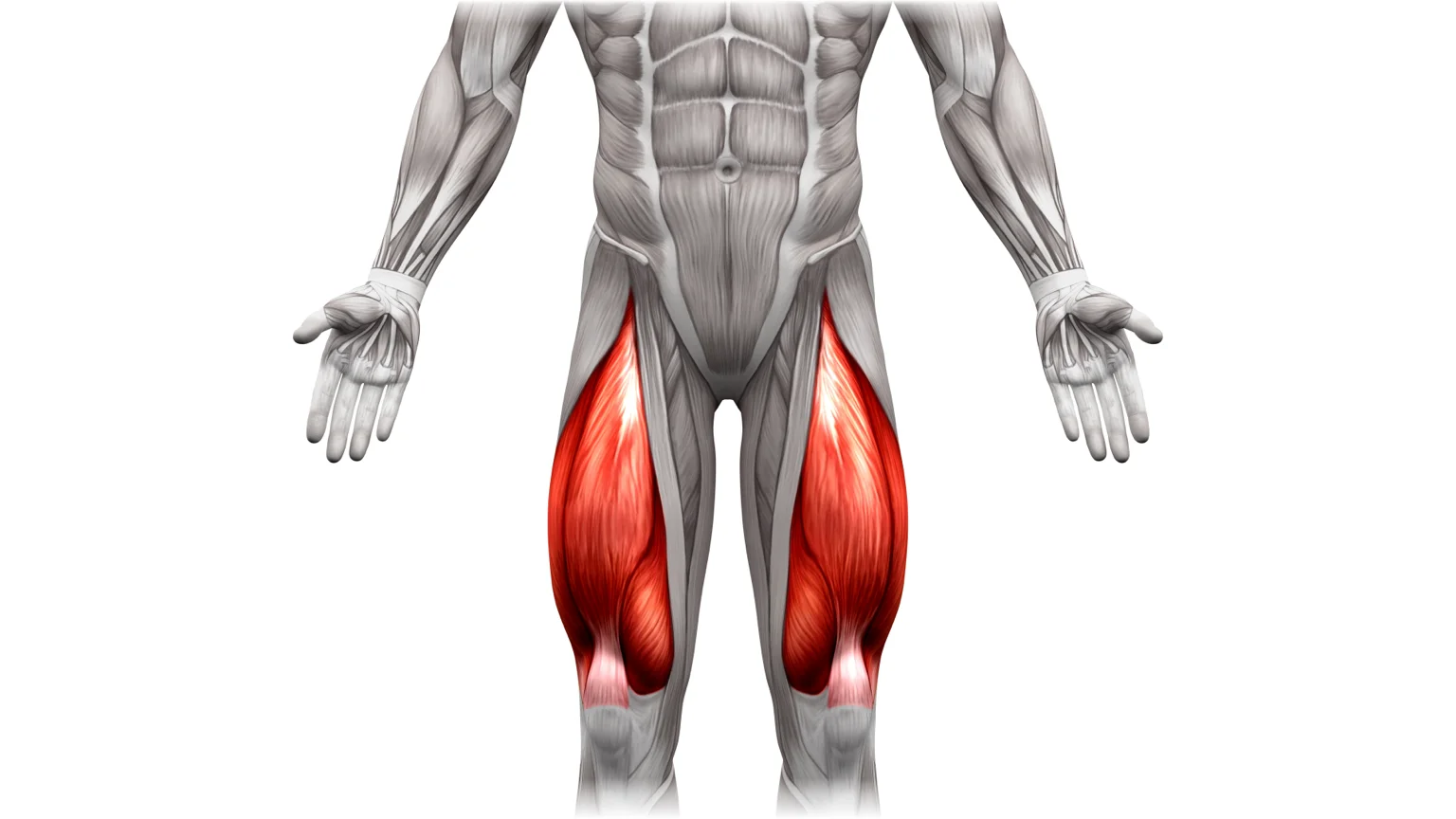
Your quads are made up of 4 muscles:
- Vastus lateralis – This muscle, sitting on the outer side of your thigh, is the largest and most powerful muscle of your quads group. The primary function of the vastus lateralis is to extend your lower leg about your knee.
- Vastus medialis – This muscle is located on the inner part of your thighs. It also helps extend your lower leg and is particularly important for maintaining balance during walking and running.
- Vastus intermedius – This muscle lies between the vastus lateralis and vastus medialis along the front of your thigh bone. Its also helps with knee extension.
- Rectus femoris – This is the only one of the four quadriceps muscles that crosses two joints – your hip and your knee. So it not only helps with knee extension, but assists with flexing your hip.
Hamstrings
Your hamstrings are made up of three muscles – the biceps femoris, the semitendinosus and the semimembranosus. Together, these muscles allow your leg to bend about the knee and assist in hip extension. Strong hamstrings are beneficial in everyday activities like walking, running and jumping.
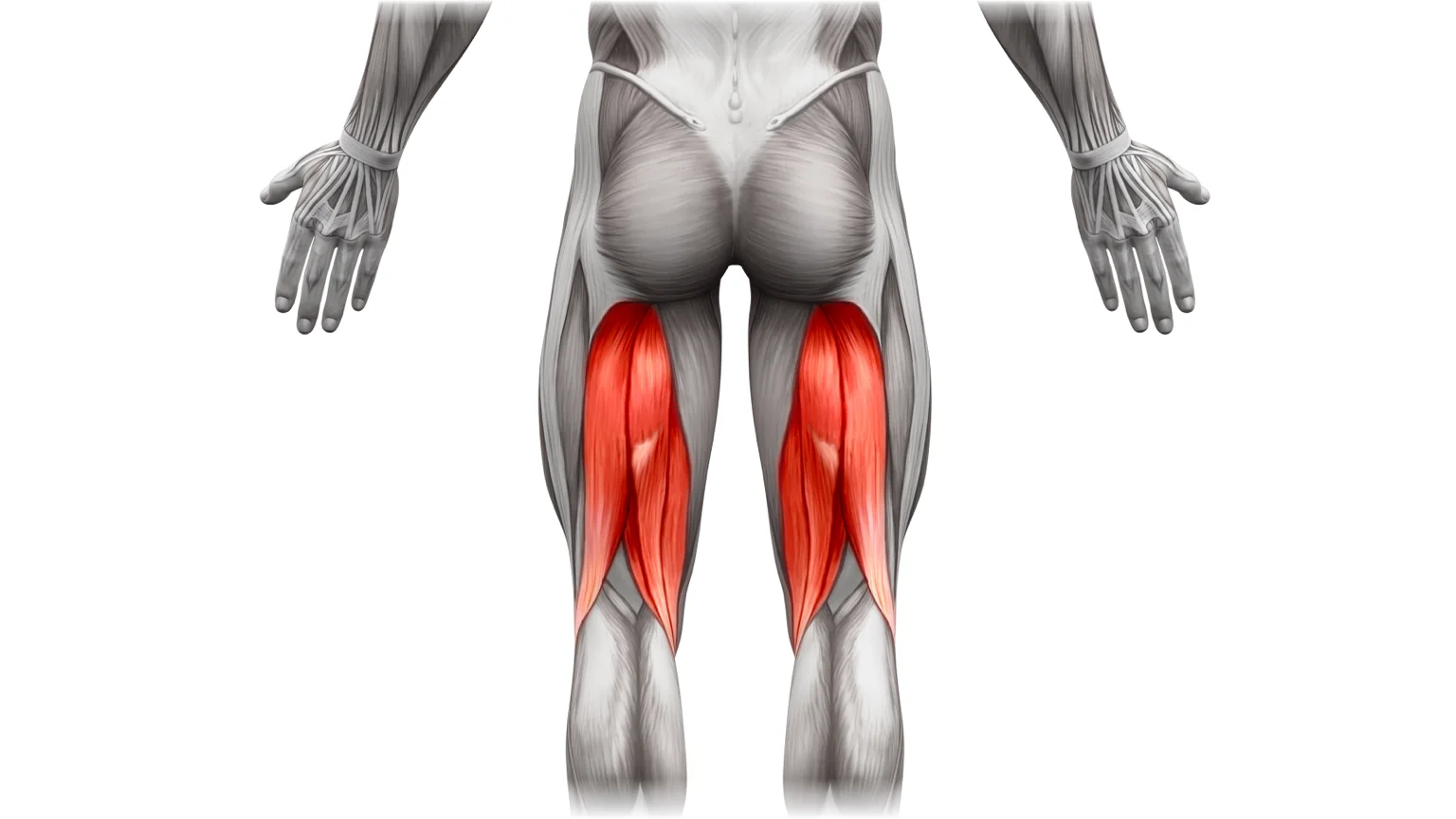
Your hamstrings are part of your posterior chain.
Glutes
Your glutes are made up of three muscles in your buttock. They produce hip extension (moving your leg back), rotation and hip abduction (moving your leg out to the side), as well as provide stability to your upper body when you stand. Your glutes are key muscles in propelling your body forwards, jumping and heavy lifting.
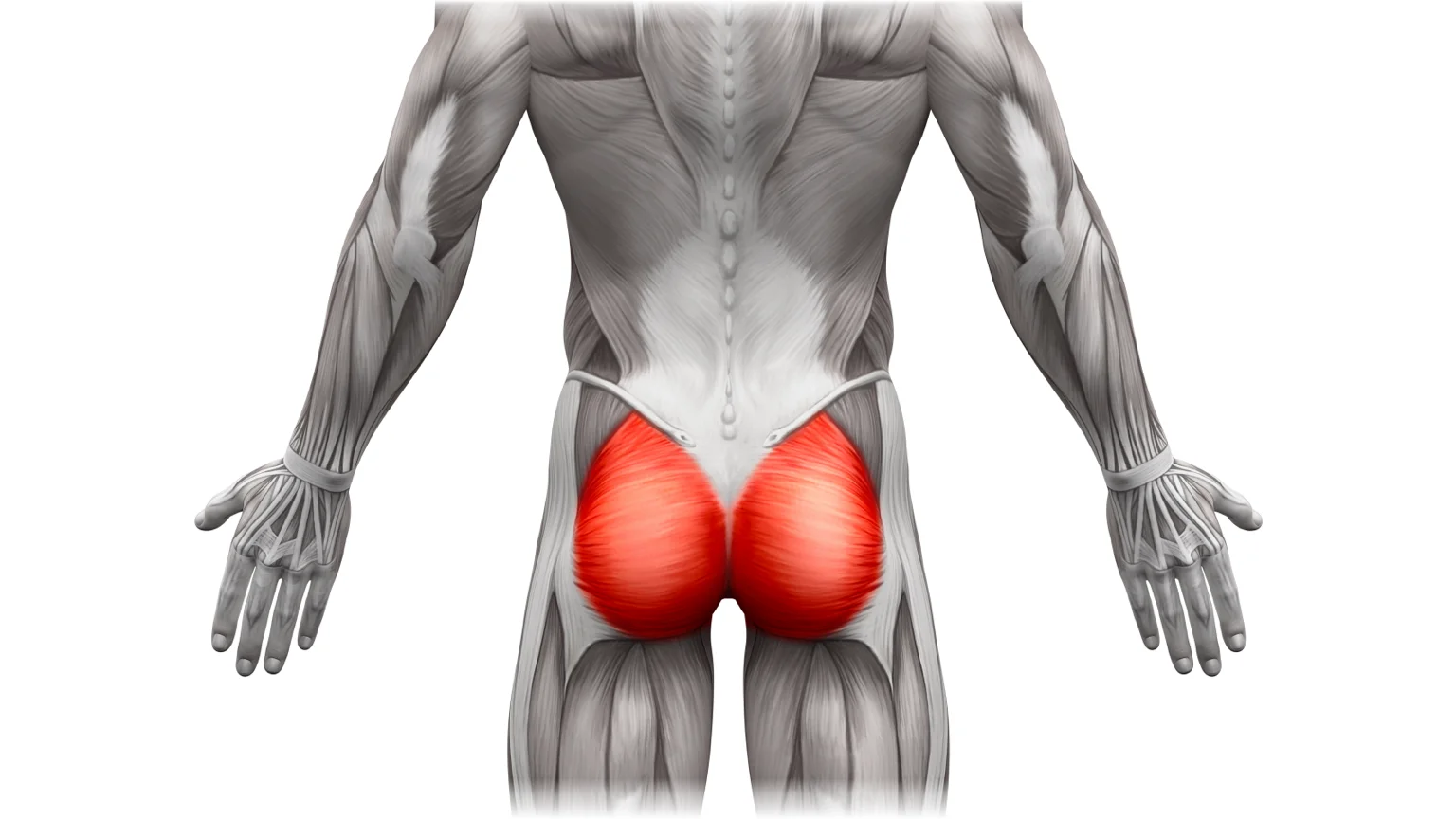
Like your hamstrings, your glutes are also one of the main muscle groups in your lower posterior chain.
Calves
Your calf muscles are in turn made up of the gastrocnemius and soleus muscles. These muscles are essential in walking, running and jumping and provide balance and stability. When you take the tiptoe position, your calf muscles contract to pull up your heels (pointing your foot downwards, i.e. plantar flexion), shifting your bodyweight onto the ball of your foot.

The Dumbbell Leg Workout
- Goblet squats – 3 sets of 8-12 reps
- Dumbbell Romanian deadlifts – 3 sets of 8-12 reps
- Reverse lunge – 3 sets of 8-12 reps
- Standing calf raises – 3 sets of 8-12 reps
Typical weekly routine
You can perform this leg workout once to twice per week, with at least a day of rest between each session. You can incorporate it into a push pull legs (PPL) or upper-lower, push-pull-legs (ULPPL) split.
Dumbbell Leg Exercises
Goblet squats
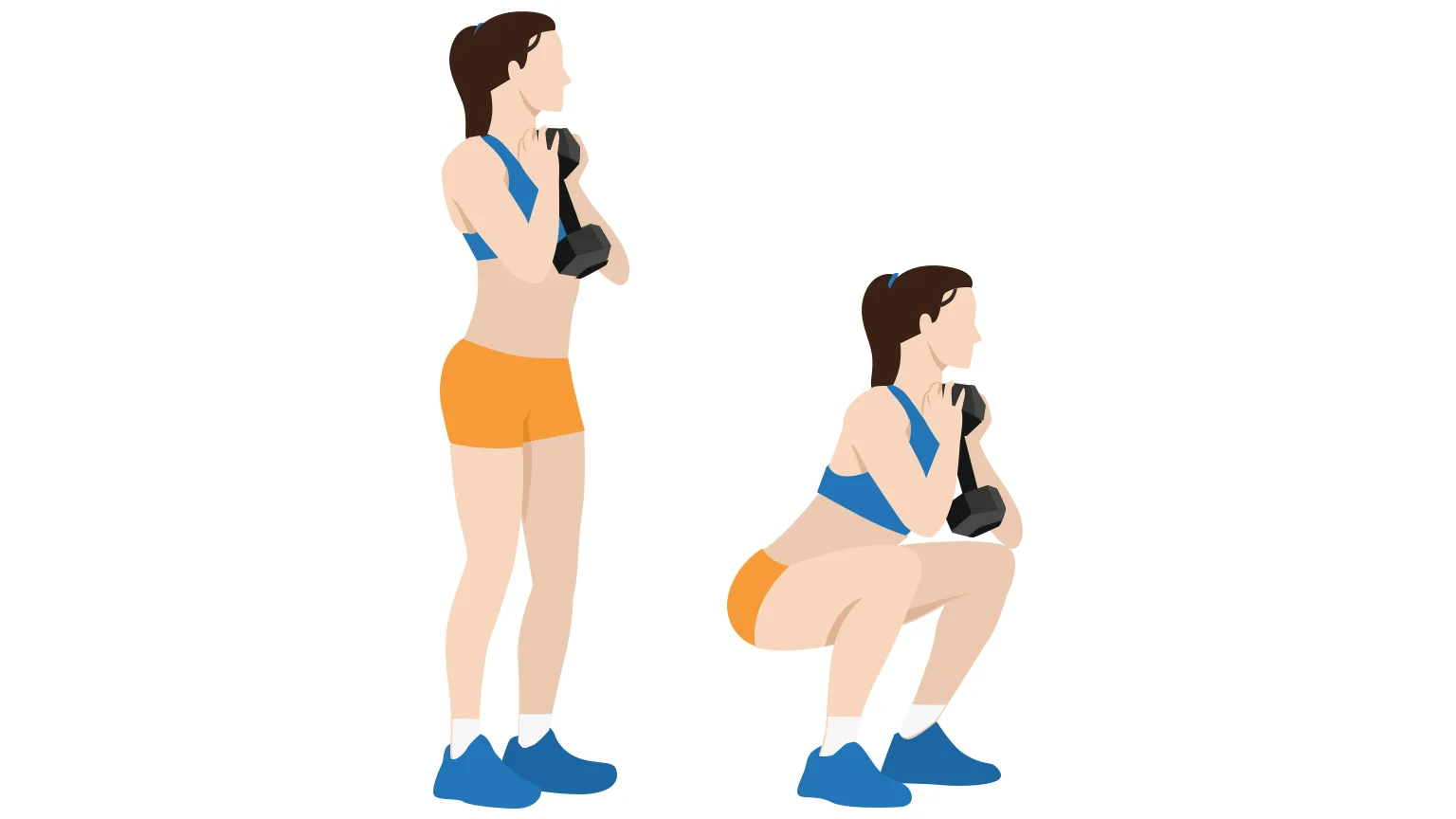
Why: The goblet squat primarily works your quads, hamstrings and glutes. It’s a compound exercise that also works your lower back, abs and calves to some extent. The dumbbell leg workout starts with the goblet squat because it combines several muscle groups into one movement.
How to do: Stand with your feet shoulder-width apart, with your toes turned slightly out. Hold a dumbbell in front of your chest, with both hands cupping the dumbbell. Keeping your back straight, bend your knees and lower your body until your knees are bent at 90 degrees. Finally, push back up through your heels to the starting position.
Read more: How to Do Goblet Squats
Dumbbell Romanian deadlifts
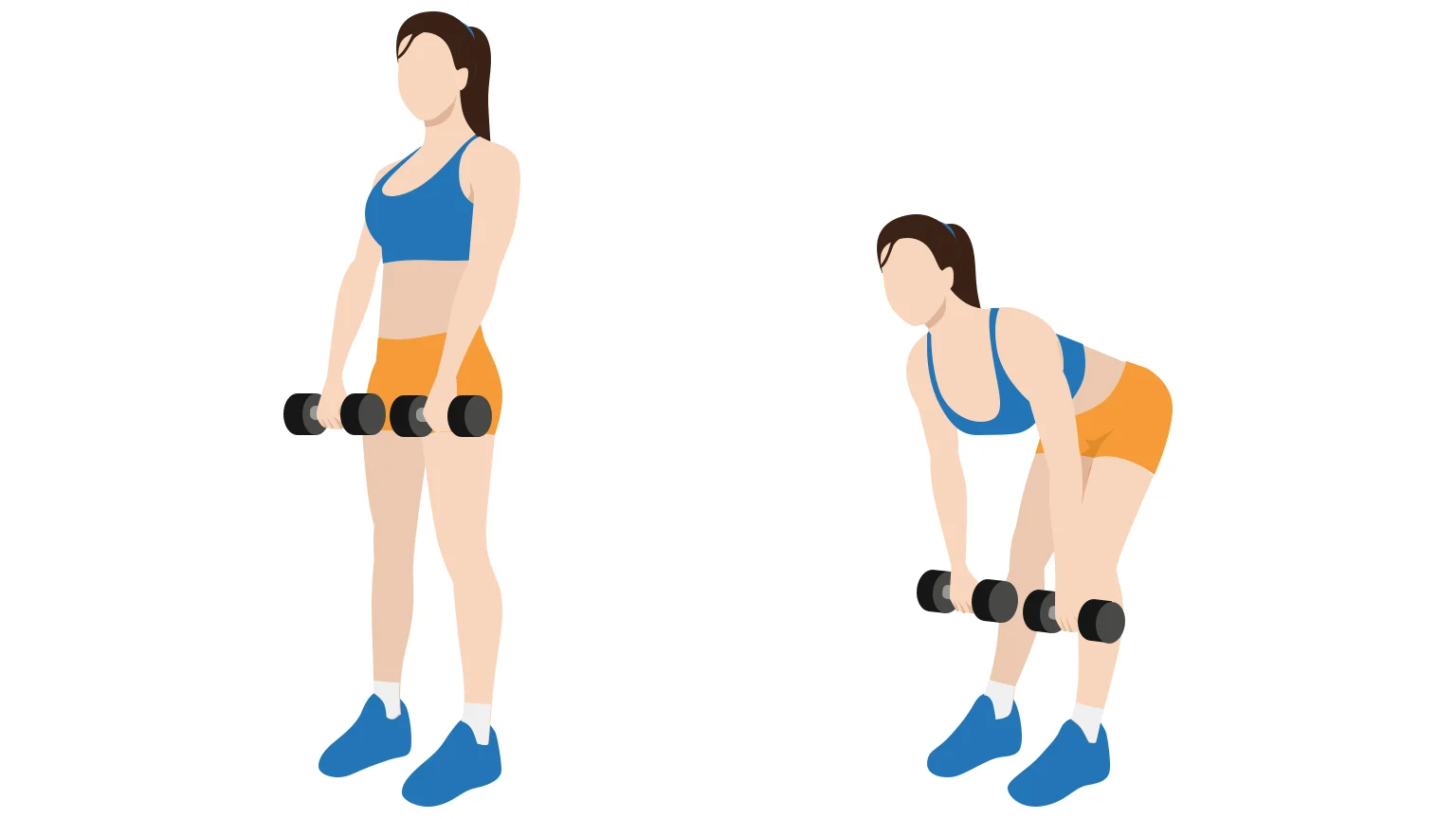
Why: Deadlifts target the muscles in your posterior chain, including your hamstrings, glutes and lower back. Romanian deadlifts emphasize the back of your legs – particularly your hamstrings and glutes. This makes them a great follow on exercise to the squat (which hits more of your quads).
How to do: Stand with your feet hip-width apart. With an overhand grip, hold the barbell at hip level. Keep your shoulders back and maintain a straight spine. Pushing your hips back, lower the barbell towards your feet. As the barbell reaches shin level, press your hips forward to return to the standing position.
Read more: How to Do a Romanian Deadlift
Reverse lunges

Why: The reverse lunge targets your quads, hamstrings and glutes, but challenges your balance, stability and coordination more than other dumbbell leg exercises. It’s another compound exercise that’s a great additional to leg day.
How to do: Stand tall with a dumbbell in each hand, and your feet hip-width apart. Step back with one foot, dropping your knee towards the ground. Drop until your back knee almost touches the floor, while the thigh of your other leg is almost parallel to the floor. Push back up through the heel of your foot to return to the starting position.
Read more: How to Do Reverse Lunges
Standing calf raises

Why: Most exercises on leg day are hitting the large muscle groups in your lower body – your quads, hamstrings and glutes. Calf raises specifically work the gastrocnemius and soleus muscles in your calves, making it a great isolation exercise to strengthen these often-overlooked muscles.
How to do: Stand up tall on a flat surface, with your feet hip-width apart. Point your toes forward and keep your shoulders back and down. Hold a dumbbell in each hand. Perform calf raises according to the 2-1-2-1 rule. This is where you raise over 2 seconds, pause for 1 second at the top, then lower over 2 seconds and finally pause for a 1 second at the bottom of the movement. Squeeze your calves at the top of the movement.
Read more: How to Do Standing Calf Raises
Tips
Start with a lighter weight
In this dumbbell leg workout, the emphasis is on building endurance. The exercises are designed to be high-rep, so choose a lighter weight you can comfortable do 8-12 reps per set.
As your strength improves, consider gradually increasing the weight. This will provide additional challenge to your muscles, leading to progress in developing size and strength.
It’s important not to start with a heavy weight or increase the weight too rapidly, as this may lead to poor form and even injury.
Using a stability ball
For an additional challenge, you can perform the squats and lunges with a stability ball. This will demand more balance and engage your core muscles as well as working your lower body muscles.
